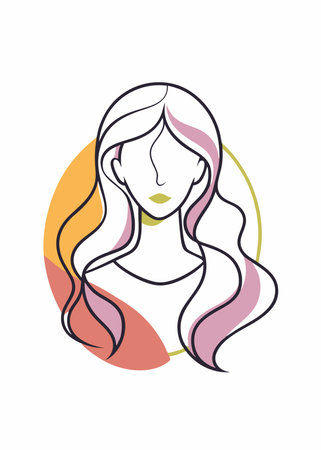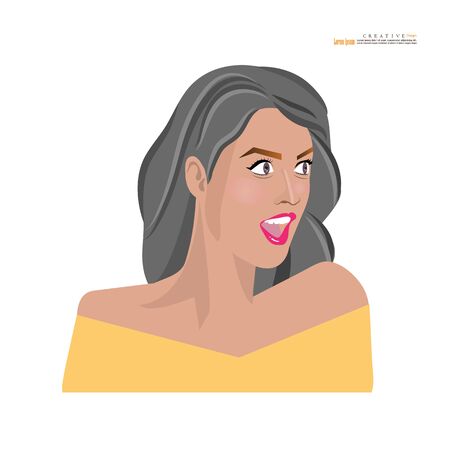Understanding Your Hair Type
When it comes to streamlining your hair care routine, the first step is getting to know your unique hair type. In the U.S., there’s a growing trend toward embracing natural textures—whether you have straight, wavy, curly, or coily hair, understanding your hair’s specific needs can make all the difference. Identifying your hair type isn’t just about appearance; it helps you select the right products and avoid unnecessary steps that can weigh down your routine and even damage your locks. For example, fine, straight hair might benefit from lightweight, volumizing products, while thick curls may thrive with rich, hydrating formulas. By tailoring your approach and skipping one-size-fits-all solutions, you’ll find that less really is more—making your daily regimen quicker, more affordable, and ultimately more effective for healthier hair.
Choosing Essential Hair Care Products
When it comes to simplifying your hair care routine, the first step is identifying which products truly matter for your hair’s health. Overloading on styling creams, serums, or specialty shampoos can actually weigh down your hair and clutter your bathroom. Instead, focus on a minimalist approach by selecting only the essentials—each packed with ingredients that genuinely benefit your hair type and concerns.
The Core Products You Really Need
Rather than crowding your shower shelf, you can narrow down your hair care arsenal to just a few key items. Here’s a breakdown of the must-haves and what to look for in each:
| Product | Main Purpose | Key Ingredients to Look For | Minimalist Tip |
|---|---|---|---|
| Shampoo | Cleanses scalp & hair | Sulfate-free cleansers (e.g., cocamidopropyl betaine), gentle hydrators (glycerin, aloe) | Pick a gentle formula suited for daily or every-other-day use. |
| Conditioner | Moisturizes & detangles | Cetyl alcohol, plant oils (argan, jojoba), hydrolyzed proteins | Choose one that matches your hair texture—fine, thick, curly, or color-treated. |
| Leave-In Conditioner or Lightweight Oil | Adds extra moisture & protects from frizz/heat | Lightweight silicones (dimethicone), natural oils (coconut, grapeseed), panthenol | You usually need just one—skip heavy creams unless you have very dry hair. |
| Optional: Dry Shampoo | Absorbs oil between washes | Rice starch, kaolin clay, minimal fragrance | Only necessary if you go several days between washes. |
Ingredient Spotlight: What Matters Most?
A minimalist routine means prioritizing quality over quantity. When shopping for any product, scan the ingredient list for proven essentials like gentle surfactants in shampoos or nourishing oils in conditioners. Avoid unnecessary fillers and heavy fragrances—they often do more harm than good. If you’re dealing with specific issues like dandruff or damage, look for targeted actives such as salicylic acid or keratin but avoid layering multiple treatments at once.
Cultural Note: American Minimalism in Hair Care
In the U.S., there’s a growing trend toward “skinimalism” that has made its way into hair care. Less is more! By sticking to these streamlined essentials and smart ingredient choices, you’ll not only save time and money—you’ll also give your locks exactly what they need to stay healthy and vibrant without the overwhelm.

3. Washing and Conditioning—How Much Is Enough?
When it comes to streamlining your hair care routine, less is often more—especially when washing and conditioning your hair. Over-washing can strip your scalp of its natural oils, leaving your hair dry and more prone to breakage. On the flip side, under-washing may lead to product buildup and an oily scalp. For most Americans, washing two to three times a week is the sweet spot, but this can vary based on your hair type and lifestyle. If you have fine or oily hair, you might feel the need to wash a bit more frequently; for curly or textured hair, stretching washes out longer helps maintain essential moisture.
Conditioning plays a key role in keeping your locks healthy without weighing them down. Apply conditioner mainly to the mid-lengths and ends of your hair—where it’s needed most—to avoid greasy roots and unnecessary buildup. Look for lightweight, nourishing formulas if your hair tends to get weighed down easily. Try using a clarifying shampoo once every couple of weeks to remove excess product residue and keep your scalp feeling fresh without disrupting its natural balance.
Remember: finding your optimal wash routine is about listening to what your hair needs rather than following one-size-fits-all advice. By adopting a minimalist approach, you can cut back on unnecessary steps while ensuring your hair stays clean, healthy, and manageable day after day.
4. Simple Styling for Everyday Life
When it comes to a minimalist hair care routine, simplicity doesn’t mean sacrificing style. Embracing easy, healthy styling techniques that fit seamlessly into the American lifestyle can help you look put-together without the stress. Below are some effortless go-to styles and their benefits, perfect for busy mornings, workdays, or casual weekends.
| Style | Description | Why It’s Healthy |
|---|---|---|
| Ponytail or Low Bun | Gather your hair into a ponytail or twist it into a low bun at the nape of your neck. | Reduces heat styling; gentle on hair shaft and scalp if not too tight. |
| Loose Waves | Braid damp hair before bed and unravel in the morning for natural waves. | No heat damage; enhances natural texture; quick and effortless. |
| Air-Dried Natural Look | Apply a lightweight leave-in conditioner after washing and let your hair air dry. | Minimizes exposure to hot tools; keeps moisture locked in. |
| Sleek Headband Style | Use a fabric headband to push hair back for a polished yet simple look. | Keeps hair off face without tugging or breakage; adds flair with minimal effort. |
Styling Tips for Busy Americans
- Limit Heat Tools: Save flat irons and curling wands for special occasions to prevent dryness and split ends.
- Choose Accessories Wisely: Opt for scrunchies or silk hair ties to minimize breakage compared to traditional elastics.
- Embrace Your Texture: Work with your natural curl or wave pattern instead of fighting it—this saves time and keeps hair healthier.
- Quick Refreshes: Dry shampoo or a bit of water can revive second- or third-day hair quickly when youre on-the-go.
The Minimalist Approach: Less Is More
The key is to avoid over-styling and let your hair rest as much as possible. By choosing styles that don’t require daily manipulation or heavy products, you’ll promote stronger, shinier locks over time. Remember, healthy hair is always in style—and with these simple techniques, you can enjoy both convenience and confidence every day.
5. Protecting Your Hair from Everyday Stressors
When streamlining your hair care routine, protecting your strands from daily environmental stressors is essential for maintaining healthy locks. In the U.S., hard water, sun exposure, and frequent heat styling are some of the most common culprits behind dryness and damage. Here’s how to keep your hair resilient while keeping your routine minimal:
Guarding Against Hard Water
Many American households have hard water, which can leave mineral buildup on hair, making it look dull and feel brittle. To minimize its effects, consider installing a shower filter that targets minerals like calcium and magnesium. If that’s not an option, rinse your hair with a mixture of apple cider vinegar and water once a week to help remove residue naturally—just one extra step that can make a big difference.
Shielding from Sun Exposure
Sunshine is great for the soul but tough on your hair. UV rays can break down proteins and fade color-treated locks. When you know you’ll be outdoors, wear a wide-brimmed hat or use a leave-in conditioner with built-in UV protection. Many lightweight formulas won’t weigh down fine or oily hair types, making them perfect for minimalist routines.
Managing Heat Styling Wisely
Heat tools like blow dryers, flat irons, and curling wands are everyday essentials but notorious for causing split ends and weakening hair structure over time. Streamline your styling by embracing air-drying whenever possible or using heat tools only a couple of times a week. Always apply a thermal protectant spray before any heat exposure—this small addition shields hair without complicating your regimen.
Pro Tip: Layer Lightly
If you do need to use multiple products (like a protectant and a lightweight serum), stick to minimal amounts and focus on mid-lengths to ends where damage occurs most.
Simplified Protection Pays Off
By addressing just these key environmental factors—hard water, sun, and heat—you’ll reduce long-term damage while keeping your hair care routine as simple and effective as possible.
6. When (and How) to Upgrade Your Routine
Even the most streamlined hair care routine sometimes needs a refresh. If you notice your hair feeling consistently dry, looking dull, breaking more easily, or if your scalp feels itchy or oily despite regular washing, these are signs your minimalist regimen may need an upgrade. Pay attention to seasonal changes; for example, winter can bring extra dryness while summer might cause excess oil or frizz. Also, lifestyle shifts like starting a new workout routine or moving to a different climate can impact your hair’s needs.
Recognizing the Signs
Minimalist doesn’t mean ignoring what your hair is telling you. Watch for increased tangles, loss of shine, or buildup that won’t wash away. These clues indicate it’s time to assess your products and habits. Are you using the right cleanser for your scalp type? Has it been months since you last trimmed your ends? Sometimes, hair simply outgrows a routine that used to work well.
Simple Adjustments
Before you overhaul everything, try small tweaks: add a lightweight leave-in conditioner if strands are parched, or clarify with an apple cider vinegar rinse if you’re noticing buildup. If breakage is an issue, switch to a silk pillowcase or use a wide-tooth comb instead of brushing wet hair. Minimalism is about doing less, but doing it smarter.
When to Bring in New Products
If subtle changes don’t solve the problem, consider introducing one new product at a time—like a sulfate-free shampoo for sensitive scalps or a deep conditioning mask for extra nourishment. Monitor how your hair responds over several weeks before adding anything else.
Keep It Simple and Mindful
Ultimately, upgrading your minimalist hair care routine is about tuning into your hair’s current needs without falling into the trap of product overload. By making thoughtful adjustments and paying attention to how your hair reacts, you’ll keep your locks healthy—and your routine refreshingly uncomplicated.


